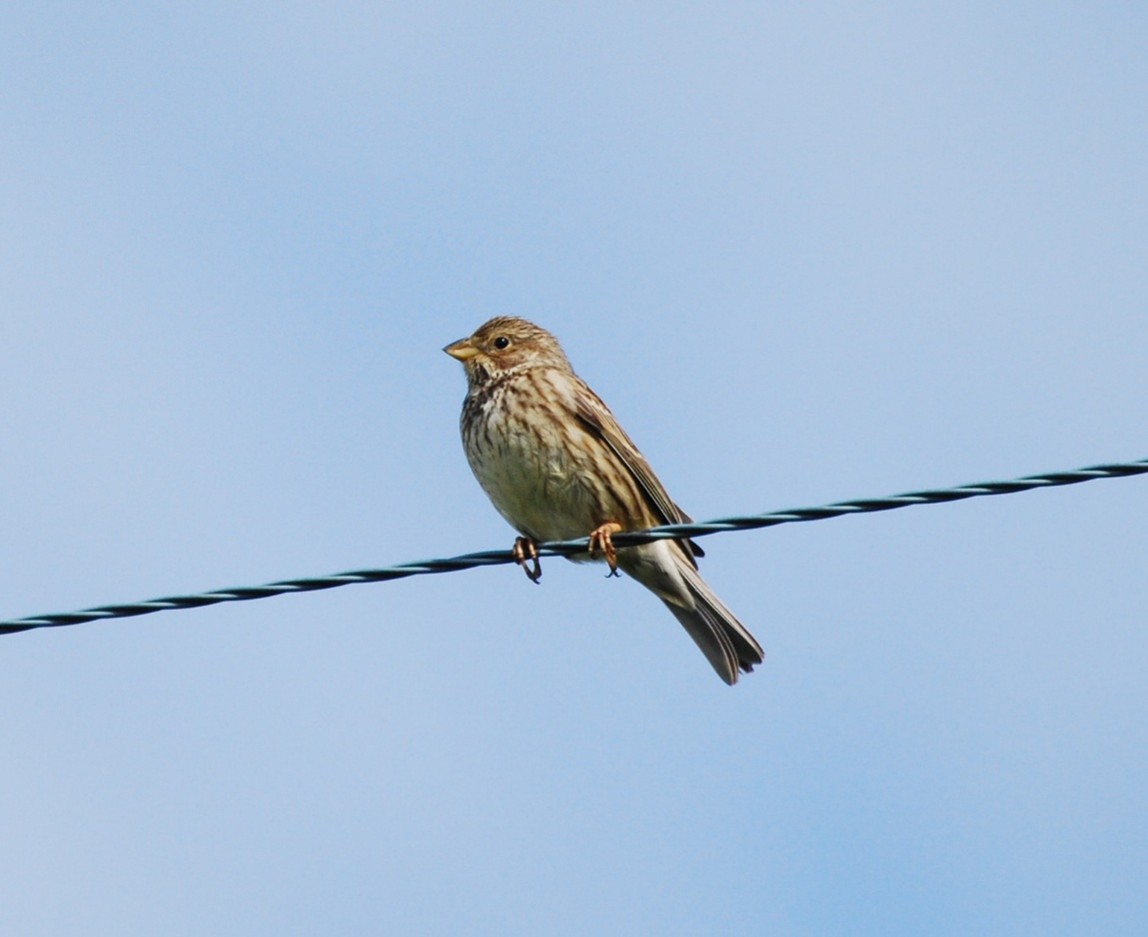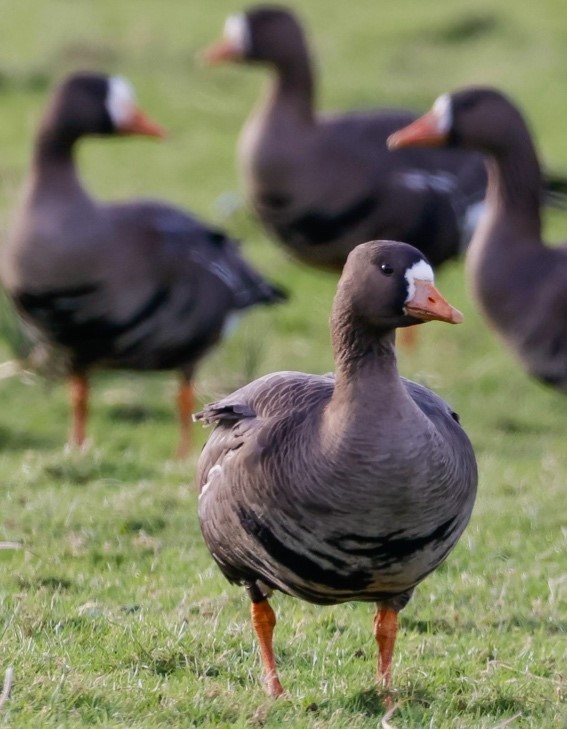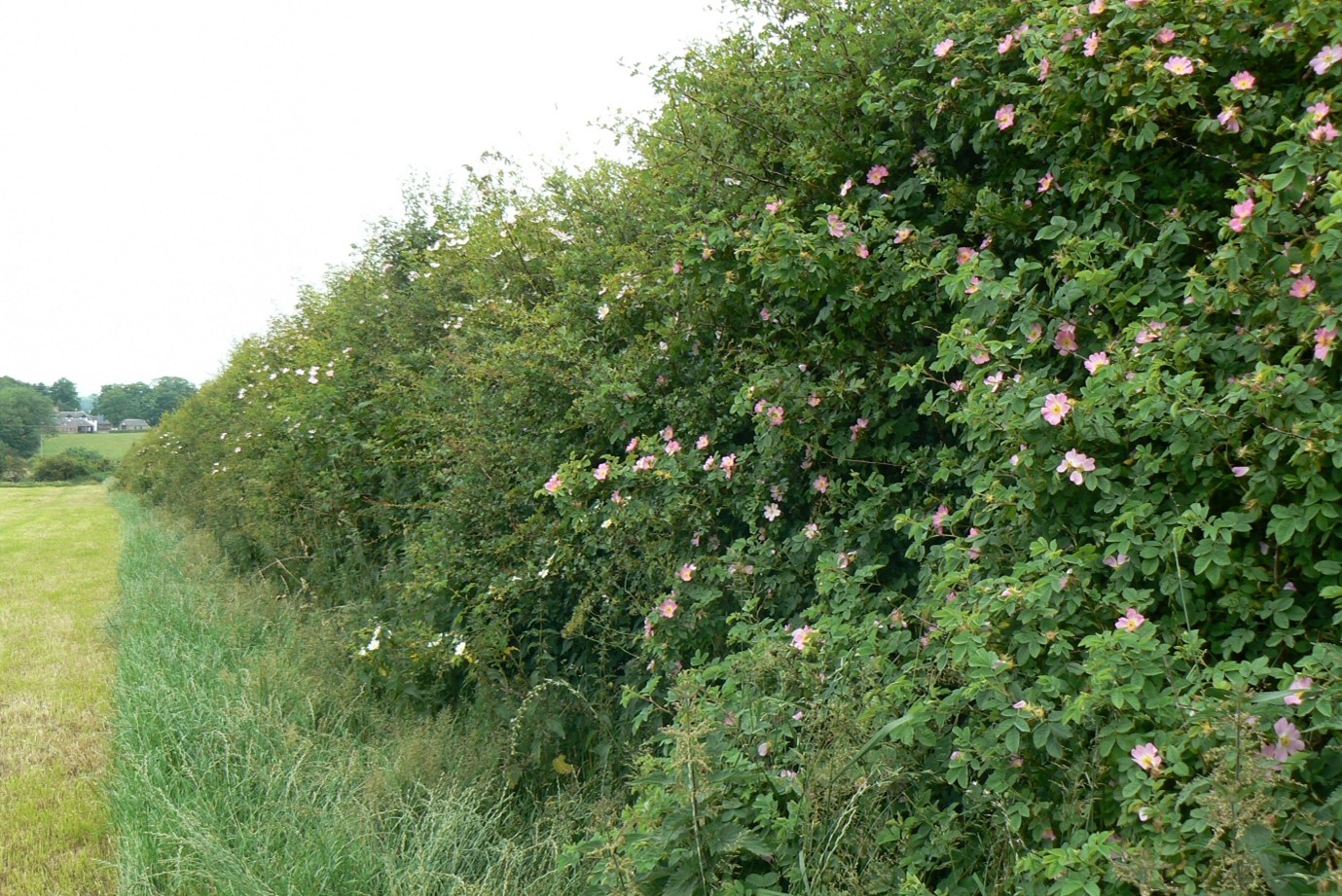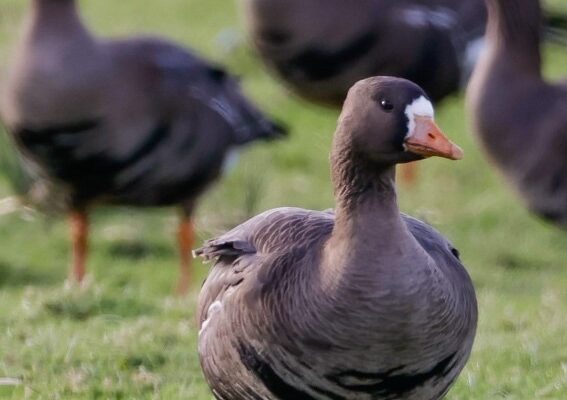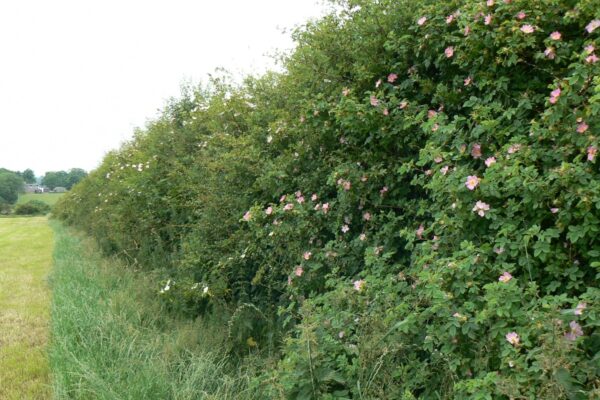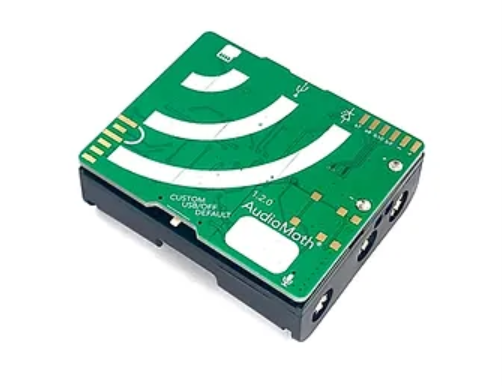Thermal Imaging for Biodiversity Monitoring and Land Management
4 September 2025Thermal imaging is a non-invasive technology that uses special cameras to detect the infra-red heat given off by objects. Originally developed for the military, the technology has since been adapted for civilian use, particularly hunting, buildings diagnostics (detecting heat loss) and, in recent years, wildlife observation.
This article considers some of the reasons why thermal imaging might be useful for land managers and looks at the technology currently available and how it can be used.
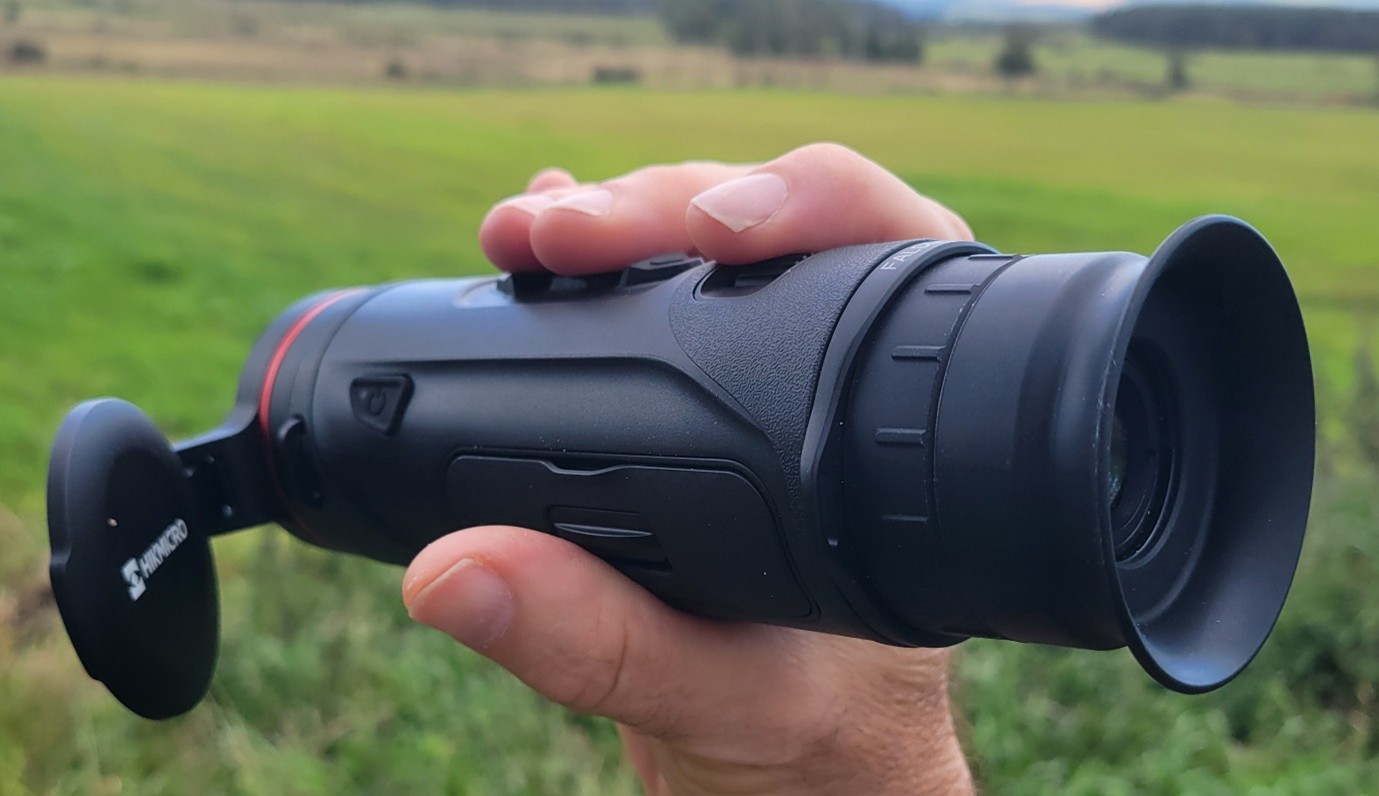
What are the benefits of thermal imaging to land managers?
Thermal imaging is one of several technologies, alongside trail cameras and bio-acoustic monitoring, that have revolutionised the monitoring of wildlife over the past 15-20 years. This has allowed us to better understand the presence and activity of nocturnal and secretive wildlife.
While this is likely to be of interest to many land managers keen to learn more about the wildlife on their land, there are also practical benefits for wildlife management that come from monitoring species such as deer, ground-nesting birds and predators.
As government policy puts greater emphasis on delivering environmental benefits from farming, and private finance starts to find its way into emerging markets for natural capital, it will become increasingly important for land managers to understand how wildlife uses their land to target changes and measure responses.
Night-vision versus thermal imaging
Thermal imaging is a different technology to night-vision, which has been around longer and is the technology used in trail cameras. Night-vision cameras require a light source (such as an infra-red LED) to illuminate the object, and the sensor in the camera amplifies the reflected light to produce a black and white photographic image.
The range of a night-vision camera is limited by the reach of the infra-red light source and is typically in the range of 10-30 metres for effective use. Night-vision equipment, including trail cameras, can be bought relatively cheaply, with some models costing less than £100.
By contrast, the sensor in a thermal imaging camera detects the infra-red radiation (heat) emitted by objects and therefore does not require any sort of light source. This means that it will work in total darkness, but it will also detect objects just as effectively in bright daylight and can work through light rain, fog and light foliage. The range is limited by the resolution of the sensor, but some models can detect larger animals up to 2km away. This makes thermal imaging better for quickly scanning larger areas to detect animals, in comparison to trail cameras which provide longer-term monitoring of a very specific location.
Animals are much easier to spot using thermal imaging than night-vision because their heat signatures stand out strongly against the cooler background vegetation. Rocks and other features heated up in the sun can also stand out against the vegetation, but generally less strongly than living creatures. However, thermal images do not have the same level of detail as night-vision (although this difference is only relevant at the close ranges where night-vision cameras actually work).

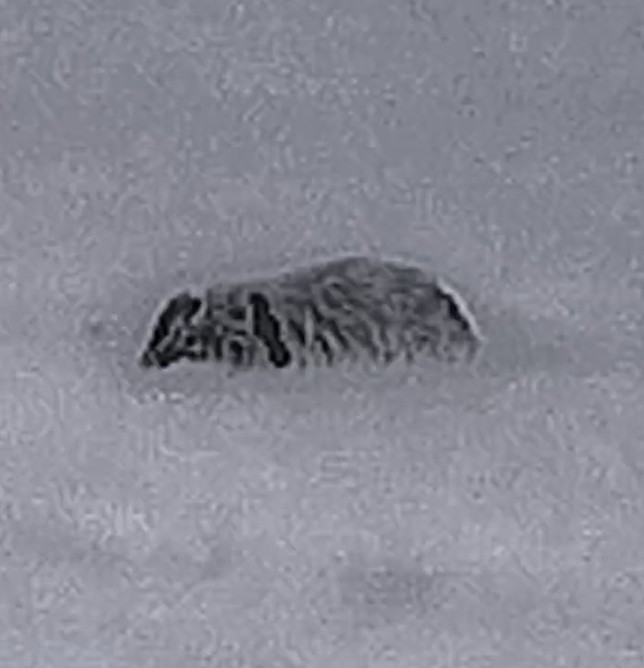
Night-vision produces a detailed photographic image of this badger but only at close range (in this case less than 5 metres with a trail camera).
A thermal image of a badger has less detail but is possible at greater range (in this case around 80 metres) and the animal stands out clearly from the background.
Practical uses of thermal imaging for biodiversity monitoring
Deer Management
Monitoring and controlling deer numbers is an important part of managing upland and woodland habitats, but deer can sometimes be difficult to pick out on a heather-covered hillside. With thermal imaging, even in daytime, deer stand out clearly against the background and are more easily located and counted than with binoculars or telescope. The same method could be used to check on livestock in large upland grazing areas.

Red deer clearly visible and easy to count against a hillside at a range of 1.5km. This image was taken in daylight, but the deer were not immediately obvious to the naked eye.
Protecting ground-nesting birds
Ground nesting birds are vulnerable to agricultural activities such as cultivation, rolling and mowing, as well as predation. Thermal imaging from a suitable vantage point (or even from a drone) can be used to locate nests relatively quickly, particularly for species whose nests are concealed in taller vegetation, such as Curlews. This allows land managers to avoid nests during agricultural operations or to protect nests from predators using temporary fencing.
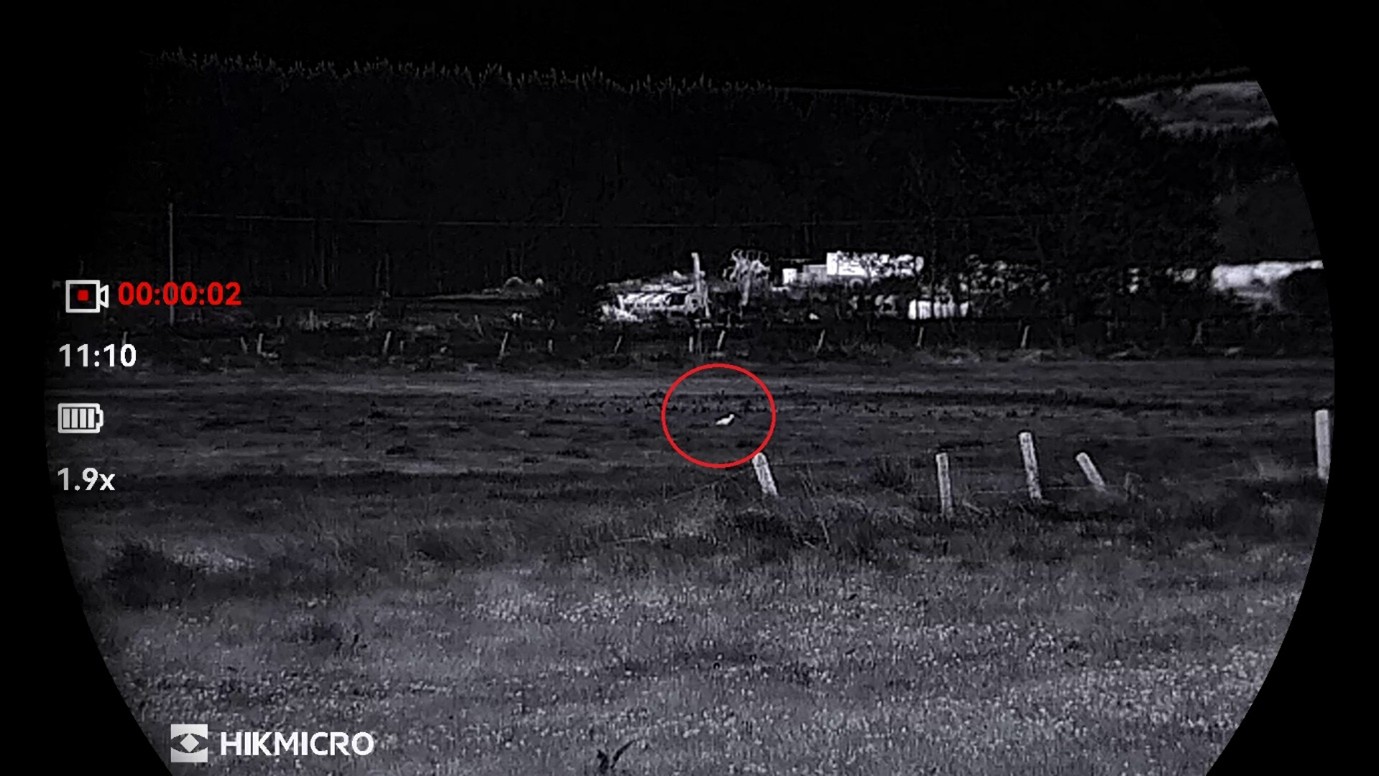
Curlew (circled) stands out clearly in this daytime thermal image.
Bat surveys
Surveying buildings and mature trees for evidence of roosting bats helps to avoid any disturbance or damage to these protected species prior to any building renovation or arboricultural work. Thermal imaging provides a good way of detecting bats emerging and re-entering roost sites. This is one situation where cheaper thermal imagers can be quite effective as potential roost sites can often be monitored at close range.

Bat (circled) on thermal image
Other wildlife surveys
Regular scanning of fields with a thermal imager helps to identify the areas that are regularly used by different species. This can highlight where the important wildlife habitats are, which areas are less regularly used and therefore have potential for enhancement, and identify areas where predation might be having the greatest impacts. Collecting this information helps to inform management of the land for biodiversity.
Disadvantages of thermal imagers
There are two main disadvantages of thermal imagers compared with night-vision equipment such as trail cameras. The first is that good quality thermal imagers are much more expensive, typically costing £1000-2000. Although there are cheaper models available for £200 or less, these are typically intended for thermal inspection of buildings and usually only have an effective range of a few metres.
The other main disadvantage is that current models can’t really be used for remote, long-term monitoring of a site, which would be useful for applications such as monitoring predator activity near ground-nesting birds. Unlike trail cameras which work at close range, there is no practical way of using movement sensors to trigger recordings over long distances and continuous video recording would drain the battery and fill the memory of most thermal imagers in a few hours. In theory, a time-lapse mode would allow such longer-term monitoring, but in the absence of this, the technology is currently limited to in-person surveys.
How to choose a thermal imager that meets your needs
Thermal imagers used for wildlife observation usually take the form of monoculars, to keep costs down. Thermal imaging binoculars exist but tend to be around twice as expensive. The monocular has a lens at the front that focuses the image onto the sensor inside and an eyepiece at the back through which the resulting image can be viewed on a small screen. Most thermal imagers have built in memory and can record still and video images. Controls for image capture, focus, zoom and other settings are usually located to be easily operated with one hand while viewing.
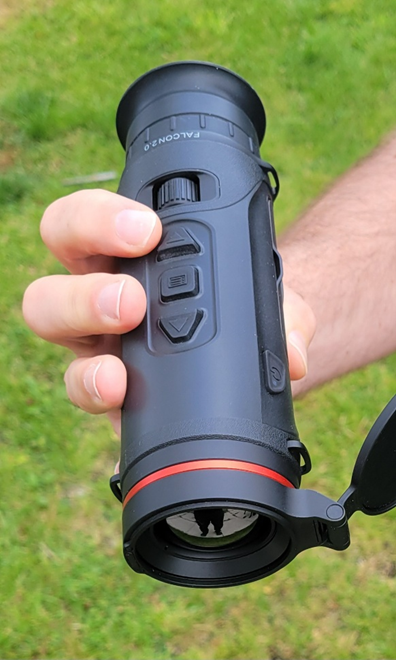
Typical thermal imaging monocular
The quality, and therefore cost, of the device is dependent on several factors. The three most important are:
Sensor resolution
The more pixels that are packed into the sensor the greater the range at which animals can be seen and the more detail that can be seen to identify the subject.
384x288 pixels is a typical resolution for many popular models (usually costing in the range of £800-1200) and can pick out larger animals such as deer up to a range of around 1km, although they will only appear as small spots of heat at that distance. Identification of a range of smaller animals is easiest within a range of 100-200 metres, depending on their size.
Higher resolution sensors of 640x480 pixels are becoming more popular, typically found in models costing £1500-2000 and will double these usable distances.
Thermal sensitivity
The Noise Equivalent Temperature Difference (NETD), measured in millikelvin (mK) indicates the ability of the sensor to detect temperature variations. A lower NETD denotes higher thermal sensitivity and is therefore likely to produce sharper, more detailed images. NETD values less than 40mK are considered good, with anything less than 18mK considered excellent.
Magnification and field of view
Unlike binoculars, where you normally want a magnification of around 8x, it can be very difficult to find wildlife with a thermal imager at high magnification, because they are generally used for scanning and detection rather than focusing on a known location. Generally, a magnification of no more than 2x is easiest to use, providing a wide field of view. It is often possible to zoom in once a target has been detected but this is normally a digital zoom and will not increase the resolution of the image.
Other features to consider are the battery life, memory capacity for recordings, water-resistance for outdoor use and the size and resolution of the viewfinder screen. One feature that is found on some models, which increases the cost but is not particularly useful for wildlife observation, is a laser rangefinder. This is a feature that is of more benefit when using thermal imaging for hunting.

Most thermal imagers offer a choice of colour palettes, which can be changed to suit personal preferences and different times of day.
Paul Chapman, SAC Consulting
Related Resources
Sign up to the FAS newsletter
Receive updates on news, events and publications from Scotland’s Farm Advisory Service


